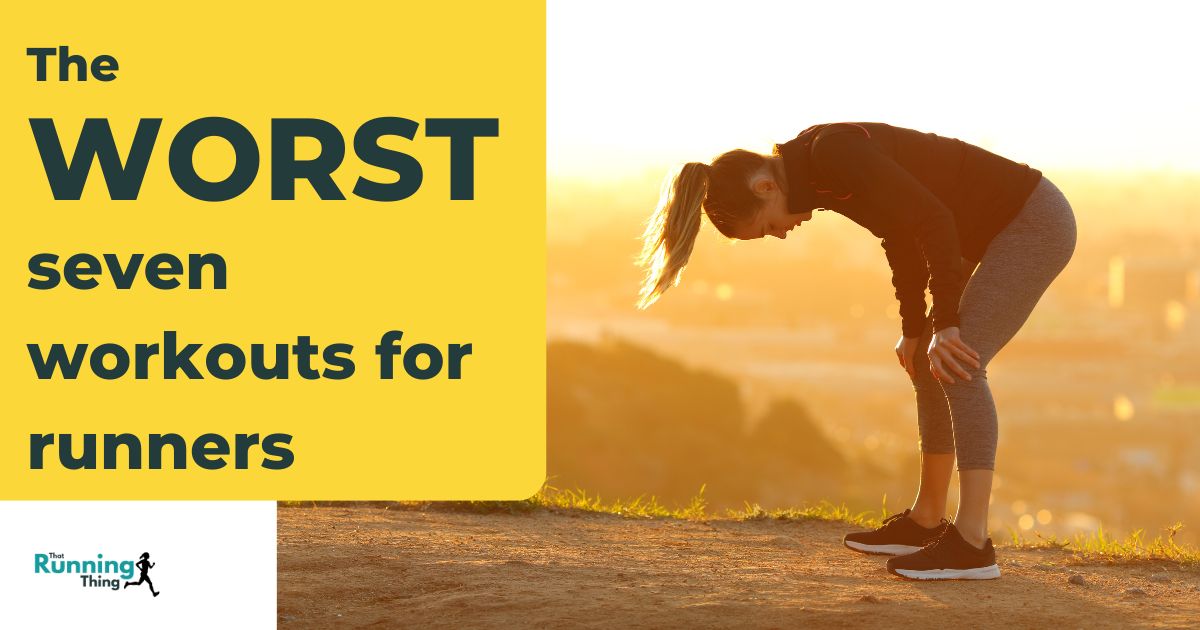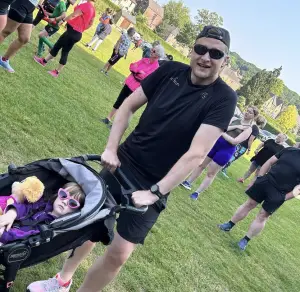Finding the right workouts to complement our running routine is key to improving performance and avoiding injury. While some exercises can boost our endurance and strength, others might not offer the same benefits and could even hinder our progress.
We need to understand which workouts to avoid so that we can focus on the ones that truly help our running. In this article, we’ll discuss the worst workouts that don’t complement running and explain why they might not be the best fit for our training plan.
1) CrossFit sessions
CrossFit is a high-intensity workout that combines weightlifting, cardio, and bodyweight exercises. It’s great for overall fitness but not ideal for runners.
CrossFit’s heavy lifting can lead to muscle fatigue. This fatigue can affect our running performance. It’s tough to maintain a consistent running routine when our muscles are sore from lifting.
The unpredictable nature of CrossFit workouts can also make it hard to plan our running schedule. We never know what to expect, which can lead to overtraining.
Let’s not forget about the risk of injury. The fast-paced, intense movements in CrossFit can increase our chances of getting hurt. An injury can keep us off the running track for weeks.
Running requires a smooth rhythm and repetitive motion. CrossFit’s varied exercises break this rhythm, which can disrupt our running form. Sticking to simpler, more repetitive workouts might be better for us as runners.
In short, CrossFit is fun and challenging, but it doesn’t mix well with a focused running routine. We should consider other forms of cross-training that better support our running goals.
2) Heavy weightlifting
Heavy weightlifting can be a tough match for our running routines. It can make our muscles sore and tired, which is not what we need when we’re trying to clock up miles. Focusing too much on lifting heavy weights can also increase our risk of injury.
When we lift heavy, our muscles need longer to recover. This recovery time might slow down our running progress. It’s important to be careful with weights that are too heavy, as they can put extra strain on our joints.
While building strength is important, we should balance it with lighter weights. Lighter weights with more repetitions can help improve muscular endurance without making us too tired for our runs. This way, we get stronger without it affecting our running ability too much.
Heavy weightlifting can be tough on our bodies, especially if we don’t warm up properly. It’s crucial to always start with a good warm-up and use proper form to avoid injuries. Let’s not forget, we need our bodies in top shape to enjoy running to the fullest.
3) HIIT (High-Intensity Interval Training)
HIIT involves short bursts of intense exercise followed by rest. It’s a popular workout for burning fat and boosting endurance.
While HIIT is effective, it can be too much if we’re already running a lot. The high intensity can stress our muscles and joints, leading to overuse injuries.
We might find ourselves feeling too tired for quality runs. Running needs a different kind of endurance, and too much HIIT can drain our energy reserves.
Also, HIIT doesn’t focus on the steady-state cardio that complements running. We need consistent, controlled effort, which HIIT doesn’t provide.
It’s important to balance our workouts. Too much HIIT can be counterproductive for runners. We should pay attention to how our bodies respond and adjust our routines accordingly.
4) Hot Yoga Classes
Hot yoga classes are really popular, but they might not be the best choice for us runners. The high temperatures in these classes can make us feel light-headed or dizzy.
We also need to be careful about dehydration. Hot yoga makes us sweat a lot, and that means we could lose a lot of fluids. Staying hydrated is super important for our running performance.
Another thing to think about is that hot yoga can make our muscles and joints too relaxed. This might increase the chance of injuries when we go for a run.
Hot yoga does improve flexibility and balance, which are good for running. But the extreme conditions might not be worth the risk. There are better ways to stay flexible without the stress of heat.
5) Powerlifting routines
Powerlifting is all about lifting very heavy weights for a few reps. It’s a sport focused on three main lifts: the squat, bench press and deadlift. These exercises are great for building strength, but they don’t help much with running.
When we run, we need muscles that can keep working for a long time. Powerlifting makes our muscles stronger. This kind of strength doesn’t help with endurance, which we need for running long distances.
Powerlifting routines often mean a lot of rest between sets. This helps us lift heavier weights. However, it doesn’t improve cardiovascular fitness, which is important for running. We need to keep our heart and lungs in good shape to run well.
Also, powerlifting can make our muscles tight and less flexible. Tight muscles can make it harder to run smoothly. We need to be flexible to run with ease and avoid injuries.
In powerlifting, we usually do a lower number of reps, like 1-5. For running, we need to train different muscle fibres which require higher reps. This mismatch means powerlifting routines aren’t the best for runners looking to improve their performance.
6) Spin classes
We all know that spin classes can be fun and a great way to burn calories. But, they don’t quite match up with running training.
First, spin classes focus heavily on the quads. This can create an imbalance with the hamstrings, which are vital for running.
Second, the fixed bike position means we don’t get the full range of motion that running offers. Our hips, knees, and ankles move differently in spin classes.
Lastly, high-intensity spinning can lead to overtraining. If we push too hard in spin class, we might not have enough energy for our running sessions.
Spin classes might be exciting and intense, but they don’t really help us improve our running technique or endurance.
7) Plyometric exercises
Plyometric exercises involve explosive movements, like jumps and bounds. They are great for building power and speed. We do exercises like box jumps, burpees, and jump squats to improve our athletic performance.
While plyometrics can help with sprint power, they may not go well with long-distance running. We risk injury if we do not have a proper base of strength and conditioning.
Many plyometric exercises put a lot of stress on our joints. When we do them too often, our knees, ankles, and hips can start to hurt. This stress can interfere with our running routine.
Runners need endurance and steady pacing. Plyometric exercises focus on short bursts of energy. Doing them can make us tired and affect our ability to run long distances. This imbalance can make our training less effective for distance running.
We need to be careful when adding plyometrics to our workout plan. Balancing these exercises with running can be tough. It is key to listen to our bodies and adjust as needed to prevent overtraining or injury.
Understanding the Importance of Complementary Workouts
Complementary workouts support running by improving strength, flexibility, and overall fitness. These exercises help prevent injuries and enhance performance.
Why Complementary Workouts Matter
When we run, we mainly use our leg muscles. This can lead to muscle imbalances since other muscles are underused. Complementary workouts help to target and strengthen these neglected muscles. This ensures that our entire body remains strong and stable.
Additionally, running can be hard on our joints and bones. Workouts like strength training or yoga can help to build bone density and protect our joints. This can lead to fewer injuries and a more enjoyable running experience.
Benefits of Balanced Training Programmes
Balanced training programmes make us better overall athletes. By incorporating a variety of exercises, we give our bodies a break from the repetitive motion of running. This can reduce the risk of injuries caused by overuse.
Strength training, for instance, can increase our power and speed. Flexibility exercises can improve our range of motion, making each run smoother and more efficient. Finally, cross-training can help keep us mentally fresh by adding variety to our routine.
Key Factors in Choosing Complementary Workouts
When picking workouts that go hand-in-hand with running, we should focus on how they affect our running performance and how they help us avoid overtraining and injuries.
Impact on Running Performance
Choosing workouts that improve our running efficiency is crucial. Activities that build strength, flexibility, and balance can significantly boost our performance.
For instance, strength training is vital. It helps build muscles in our legs, core, and upper body, which supports better running posture and endurance.
Yoga and pilates improve flexibility and balance. This can lead to more efficient movements and a reduced risk of injury.
Cross-training with low-impact activities like cycling or swimming provides cardio benefits and keeps our fitness level up without the high-impact stress on our joints.
Avoiding Overtraining and Injury
We need to be cautious about overworking our bodies. Balancing running with complementary workouts helps prevent overuse injuries.
Rest days are critical. Including one or two rest days per week helps our muscles recover and get stronger.
Foam rolling and stretching should be part of our routine. These activities help release muscle tension and improve blood flow.
Monitoring our intensity is also essential. We should mix high-intensity workouts with low-intensity ones. This balance ensures we’re not constantly pushing our bodies to the limit and risking injury.
By combining different types of workouts and ensuring we give our bodies enough recovery time, we can stay fit and healthy without the risk of overtraining.


